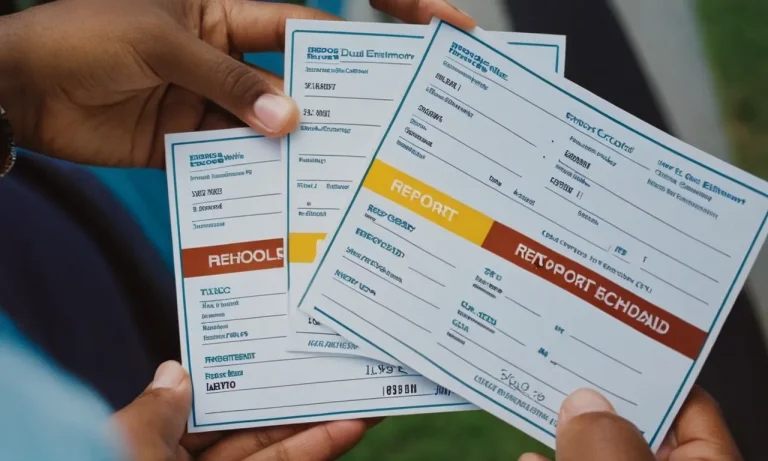Navigating the educational landscape of a foreign country can be a daunting task, especially when it comes to understanding the financial implications. If you’re planning to relocate to Mexico or simply curious about the country’s educational system, the question ‘Is school free in Mexico?’
is likely on your mind.
If you’re short on time, here’s a quick answer to your question: Public education in Mexico is free and compulsory for children between the ages of 6 and 15. However, there are certain costs associated with attending public schools, such as uniforms, supplies, and transportation.
In this comprehensive guide, we’ll delve into the intricacies of Mexico’s educational system, exploring the various levels of education, the costs involved, and the options available for both Mexican citizens and international students.
Whether you’re a parent, a student, or simply someone with a keen interest in education, this article will provide you with valuable insights and a deeper understanding of the topic.
Overview of Mexico’s Educational System
Mexico has a well-established educational system that aims to provide quality education to all its citizens. The country’s education system is divided into several levels, each designed to cater to the specific needs of students at different stages of their academic journey.
Let’s explore the different aspects of Mexico’s educational landscape.
Levels of Education
- Basic Education: This level includes pre-school (educación preescolar), primary school (educación primaria), and secondary school (educación secundaria). It is considered the foundation for further academic pursuits and is compulsory for all children.
- Upper Secondary Education: After completing basic education, students can choose to pursue upper secondary education, which includes high school (bachillerato or educación media superior) and vocational or technical education (educación profesional técnica).
- Higher Education: This level encompasses undergraduate (licenciatura or educación superior) and graduate programs (posgrado), such as master’s and doctoral degrees, offered by universities and specialized institutions.
Compulsory Education
In Mexico, education is compulsory and free for all children between the ages of 3 and 18. This includes pre-school, primary, and secondary education. According to the OECD Education Policy Outlook for Mexico, the country has made significant progress in increasing access to education, with a net enrollment rate of 97% for primary education and 90% for lower secondary education as of 2019.
Public vs. Private Schools
Mexico’s educational system offers both public and private school options. Public schools are funded by the government and are free to attend, while private schools charge tuition fees. According to a report by INEGI (National Institute of Statistics and Geography), in the 2020-2021 school year, approximately 84% of students attended public schools, while the remaining 16% were enrolled in private institutions.
| School Type | Percentage of Students |
|---|---|
| Public Schools | 84% |
| Private Schools | 16% |
While public schools are generally more affordable, private schools often offer smaller class sizes, better facilities, and additional extracurricular activities. However, the quality of education can vary significantly between public and private institutions, as well as within each category.
It’s important to research and evaluate the options available in your local area to make an informed decision that aligns with your child’s needs and preferences.
Is Public School Really Free in Mexico?
When it comes to public education in Mexico, the word “free” can be a bit misleading. While it’s true that tuition fees are not required for attending public schools, there are still various additional costs that families must bear. Let’s break it down:
Tuition Fees
The good news is that public schools in Mexico, from elementary to high school levels, do not charge tuition fees. This is a constitutional right guaranteed by the Mexican government, ensuring access to education for all children, regardless of their socioeconomic status.
However, this “free” education comes with some caveats.
Additional Costs (Uniforms, Supplies, Transportation)
- Uniforms: Most public schools in Mexico require students to wear uniforms, which can cost anywhere from 500 to 1,500 Mexican pesos (around $25 to $75 USD) per year, depending on the school and the supplier.
- School Supplies: Families are responsible for purchasing school supplies such as notebooks, pens, pencils, and other materials, which can add up to a significant expense, especially for larger families.
- Transportation: Many public schools do not provide transportation services, so families must arrange and pay for their children’s commute to and from school, either through public transportation or private means.
According to a report by El Universal, a Mexican family with two children in public schools can expect to spend around 10,000 Mexican pesos (approximately $500 USD) per year on these additional costs.
Financial Assistance Programs
To alleviate the financial burden on low-income families, the Mexican government offers various assistance programs. For example, the Prospera program provides cash transfers to families in poverty, with a portion specifically designated for educational expenses.
Additionally, some states and municipalities offer their own financial aid programs or discounts on school supplies and uniforms. However, the availability and eligibility requirements for these programs can vary greatly across different regions.
While public school education in Mexico is technically “free,” the additional costs associated with uniforms, supplies, and transportation can still pose a significant financial challenge for many families. It’s crucial for parents to factor in these expenses when budgeting for their children’s education and explore available financial assistance programs to ensure that their children can access quality education without undue financial strain.
Private School Education in Mexico
While Mexico boasts a solid public education system, many families opt for private schools, which offer smaller class sizes, better facilities, and often a more comprehensive curriculum. These institutions can be a fantastic option for those seeking a top-notch education, but it’s crucial to understand the associated costs and requirements.
Costs and Fees
Private school tuition fees in Mexico can vary significantly, ranging from affordable to downright exorbitant. According to ExpatExplore, the average annual tuition for an international school in Mexico City is around $12,000 USD, but some prestigious institutions can charge upwards of $25,000 USD per year.
However, local private schools are generally more affordable, with annual fees ranging from $2,000 to $10,000 USD. It’s essential to factor in additional costs like registration fees, books, uniforms, and extracurricular activities when budgeting for private education.
Bilingual and International Schools
Mexico is home to numerous bilingual and international schools that cater to expat families or those seeking a globally-recognized curriculum. These schools typically follow the International Baccalaureate (IB) or the American/British curriculums, and classes are taught in both English and Spanish.
😍 While they tend to be more expensive, they offer a unique opportunity for students to become fluent in multiple languages and gain a global perspective.
Admission Requirements
The admission process for private schools in Mexico can be competitive, especially for top-tier institutions. Most schools require prospective students to take entrance exams, submit academic records, and attend interviews. Some may also request letters of recommendation or essays.
It’s crucial to start the application process early, as many schools have limited spots and strict deadlines. Additionally, some schools may require proof of financial ability to cover tuition fees for the entire duration of the program.
Education for International Students in Mexico
Pursuing higher education abroad can be an exciting yet daunting prospect for international students. Mexico, with its rich cultural heritage, vibrant cities, and affordable cost of living, has emerged as an attractive destination for students from around the world.
Let’s delve into the key aspects of studying in Mexico as an international student.
Tuition and Living Costs
One of the biggest advantages of studying in Mexico is the relatively low tuition fees compared to many other countries. Public universities in Mexico offer significantly lower tuition rates for international students, ranging from approximately $500 to $3,000 per year, depending on the program and institution.
Private universities, on the other hand, tend to be more expensive, with annual tuition fees ranging from $5,000 to $15,000 or more. However, even at private institutions, the costs are generally lower than those in the United States, Canada, or Western Europe.
Living expenses in Mexico are also quite affordable, especially in smaller cities or towns. According to Numbeo, an online database for cost of living estimates, the average monthly cost of living for a single person in Mexico City is around $600, including rent, food, and transportation.
This figure can be lower in other parts of the country, making Mexico an attractive option for students on a tight budget.
Student Visa Requirements
International students planning to study in Mexico must obtain a student visa, known as the “Visa de Residente Temporal Estudiante.” The visa application process typically involves submitting the following documents:
- A valid passport
- Acceptance letter from a recognized Mexican educational institution
- Proof of financial means to cover tuition and living expenses
- Proof of health insurance coverage
- Criminal background check
It’s essential to start the visa application process well in advance, as it can take several weeks or even months to complete. The Mexican government’s official website provides detailed information on the visa requirements and application procedures.
Language Barriers and Support
While Spanish is the primary language spoken in Mexico, many universities offer programs taught in English, especially at the graduate level. However, international students may still face language barriers in their daily lives or when interacting with administrative staff or professors.
To help overcome this challenge, most universities provide language support services, such as Spanish language courses, tutoring, or language exchange programs. These resources can be invaluable for international students looking to improve their Spanish proficiency and better integrate into the local community.
Additionally, many universities have active international student associations that can provide a supportive network and help navigate cultural differences.
Conclusion
Mexico’s educational system offers a range of options, from free public schools to prestigious private institutions. While public education is technically free, there are additional costs that families must consider, such as uniforms, supplies, and transportation.
Private schools, on the other hand, can be a significant financial investment but often provide a higher quality of education and additional resources.
For international students, studying in Mexico can be an enriching experience, but it’s essential to understand the costs involved, visa requirements, and potential language barriers. Regardless of the path chosen, education in Mexico can open doors to personal growth, career opportunities, and a deeper appreciation for the country’s rich cultural heritage.






